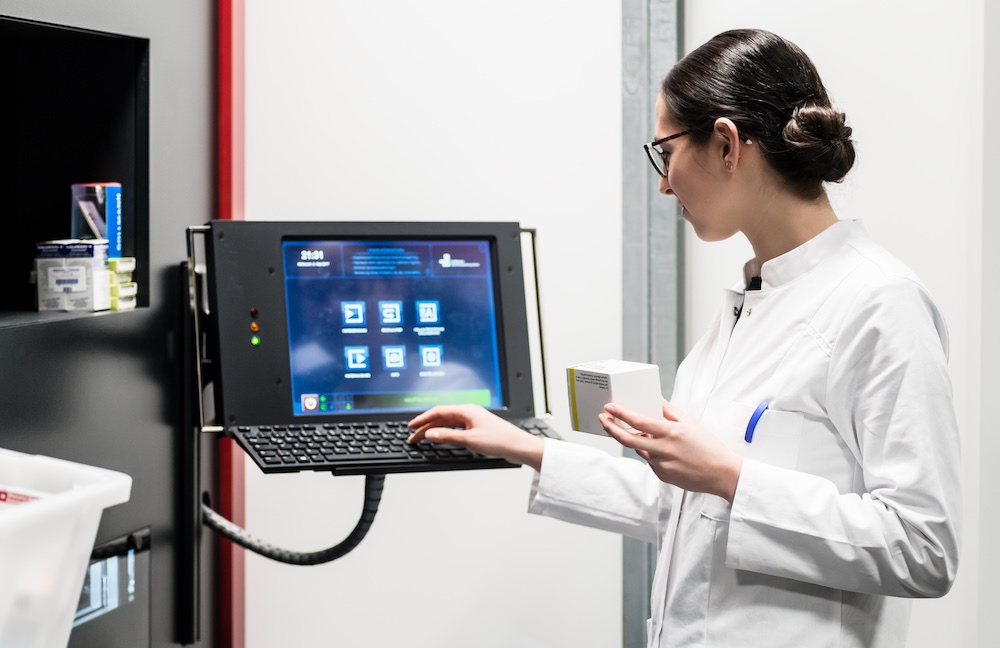Looking to raise medical simulation programs to new heights? Good news – the second edition of the healthcare simulation book, “Defining Excellence in Simulation Programs,” has recently been e-released. The publication offers a fully illustrated guide that speaks to the needs of all healthcare professionals using simulation for education, assessment, and research. Additionally, the book relays best practices for a wide variety of programs, and addresses all areas of program management, from staffing, funding, and equipment, to education models. “Defining Excellence in Simulation Programs” is currently available for purchase via Amazon.
“The most recent product of our interprofessional society is the long-awaited Society for Simulation in Healthcare Textbook, Defining Excellence in Simulation Programs, 2nd Edition, currently available for preorder or on Amazon. This textbook was a true collaboration of experts from diverse professions to include clinicians, simulation operations specialists, simulated patients, and administrators, as well as educators, architects, developers, engineers…the list goes on and on,” Yasuharu Okuda, MD, FACEP, FSSH, wrote as part of the SSH May President’s Message. “I’m also happy to report that all net proceeds received from the publisher go to SSH to invest in future publications.”
Supported by the Society for Simulation in Healthcare (SSH), the healthcare simulation book was edited by a list of clinical simulation experts from across the United States, including Okuda, Juli C. Maxworthy, DNP, MSN, MBA, RN, CNL, CPHQ, CPPS, CHSE, FNAP, FSSH, Mary Elizabeth (Beth) Mancini, RN, Ph.D., NE-BC, FAHA, ANEF, FAAN, Janice C. Palaganas, Ph.D., APRN, ANEF, FNAP, FAAN, FSSH, and the late Chad A. Epps, MD, FSSH. According to Mancini, the book was a “work of so many people who were brought together by their passion for leveraging their theory and technology of simulation-based health professions education.” The editors reached out to the leaders in the field and they responded with incredible work focused on what they do best.
“It takes a village to put something of this magnitude together. We have well over 100 authors spanning multiple countries. The intention from the beginning (thanks to Janice) was, with each edition, to give opportunities to those up and coming in the field to give them an opportunity to grow professionally,” shared Maxworthy.
Together, they created this definitive edition to include content on the International Nursing Association for Clinical Simulation (INACSL) and Association of Standardized Patient Educators (ASPE) standards of practice. With 17 new chapters, “Defining Excellence in Simulation Programs” provides reorganized content to better align with certification exam blueprints. Along with these updates and the reorganization, this edition worlds to specifically address standards of practice (from SSH, INACSL, and ASPE standards, technology standards, ethics, and more), as well as simulation modalities (history of modern-day manikins; manikin terminology, selection, and usage; and standardized patient/participant). Specific chapter features include:
- Expert’s Corner – Commentary on essential areas of training, research, and program development by simulation experts and founders
- Consider This – Practical how-to’s on critical, related topics
- Example and Case Study Boxes – Added examples that support chapter content
- Terms of Reference – Defines simulation terms and concepts
“As the initial Director of Accreditation for SSH many years ago, I went on multiple visits (11 or 12) and when I finished, I realized that if all the simulation programs talked to each other more, we would develop best practices and disseminate them,” explained Palaganas. “Beth and I were out and on the back of a napkin, we started drafting a textbook. Fast forward a few months, I met with Juli, and on the back of a napkin, we drafted a table of contents.”
“As with so many things in life, being amongst those who are passionate about something, things change, and we knew the field needed a comprehensive guidebook,” added Maxworthy.
Since publication, the authors hope that this second edition helps to drive evidence-based best practices, provide the infrastructure for programs to be successful, and give practical advice to beginner, intermediate and advanced simulationists to further their careers, do well in their job, and ultimately help our learners and patients. They also hope the book can successfully provide background, tips, and techniques for beginner and experienced readers alike.
As such, simulation methods, such as in situ, mobile, hybrid, and tabletop simulation; and the continuum of care are discussed, as ware overall healthcare simulation management. This includes information on how to create the infrastructure for a successful program, business needs and assets management, policies and procedures, and strategic plans.
Another topic found within this second edition book is funding, highlighting sources of revenue, program budgets, business plans, and fee structures. Adding to healthcare simulation center knowledge, environmental design, education, content development, and the delivery of clinical simulation are explained in ways leaders and educators can benefit from. Regarding the delivery of simulation, readers can expect to learn about assessment in healthcare simulation, preparing the learner, managing the scenarios, and more.
More areas of discussion within the book include research and resources, as ways for both healthcare simulation learners and educators to continue on their quest for knowledge. Terms of reference, examples of studies, case and scenario development templates, and more are included as points of reference.
In terms of what exactly defines excellence across simulation programs, Mancini shared that there are many definitions. Still, for her, excellence is defined by understanding and utilizing the best practices in the art and science of simulation-based education.
Maxworthy added that, in her travels, as an accreditor for SSH she has seen so many examples of excellence but what is consistent in making a program excellent are the people. She says the more engaged they are in the profession and value their membership with organizations such as SSH that are constantly finding ways to improve their programs and thereby striving to have the best program for their learners.
“Excellence “in simulation is yet to be defined. There is a well-known book in the business world by Thomas Peters and Robert Waterman ‘In Search of Excellence’ where they studied the best run companies in the US. From reviews, observations, interviews, and visits, they were able to identify practices that they thought made these organizations successful,” said Palaganas. “As we created our Accreditation Standards, we were essentially in search of excellence, visiting and comparing our standards to practice, and we continue to uncover practices that SSH Accreditation Reviewers believe make simulation programs successful. The textbook is a compilation of these practices.”
The authors suggest that the following professionals should consider reading this second-edition book:
- Anyone who is using (or thinking about using) simulation-administrator, educators, health professionals.
- Anyone who is new to the field for sure, and with the additional 17 chapters that focus on new areas such as pivoting during disasters and cadavers, the ‘seasoned simulationist’ might find something of interest.
- Anyone who is planning to build a simulation program, participating in simulation as an educator, technologist, or administrator, and anyone looking to the future of simulation including innovation and research.
Maxworthy wanted to additionally share that she and the other editors realize the price point is rather high for the book. Unfortunately, she says they had no control over the price. The good news, she says, is that a portion of the sales goes back to SSH. As they created the book pro-bono, they believe so strongly about the value this book adds to the field.
“It is such an honor to be able to work with my fellow editors to bring all the incredible content together from global experts in healthcare simulation. This book is truly a collection of the most diverse, interprofessional information in healthcare simulation, both practical and evidence-based,” said Okuda.
He noted that three important takeaways from the book include:
- A diverse field of healthcare simulation supported by an interprofessional group of experts passionate about the practice aspects, science, and theory of healthcare simulation.
- There are now standards that have been developed in many of the areas in the field. Don’t recreate the wheel and learn from all our collective mistakes.
- The future of simulation-based education is expanding into areas such as extended reality and AI. We are no longer bound only by manikins and task trainers.
Further, the authors have already started conversations about the third edition. If anyone is interested in contributing, they should contact desp2@gmail.com. In the message, include an intended focus of contribution.
Note: Full print text expected to be out in June, delayed due to supply chain issues.
ORDER TODAY:
More About the Book’s Clinical Simulation Editors
Juli C. Maxworthy, DNP, MSN, MBA, RN, CNL, CPHQ, CPPS, CHSE, FNAP, FSSH, is an Associate Professor at the University of San Francisco, School of Nursing and Health Professions, and President (2021) of the Society for Simulation in Healthcare.
Chad A. Epps, MD, FSSH, was the Executive Director, Center for Healthcare Improvement and Patient Simulation (CHIPS), Professor at the University of Tennessee Health Science Center, and Past President of The Society for Simulation in Healthcare.
Yasuharu Okuda, MD, FACEP, FSSH, is Executive Director of the Center for Advanced Medical Learning and Simulation, CEO of USF Health Professions Conferencing Corporation, Associate Vice President, USF Health Office of Interprofessional Education and Practice, Professor of Medicine at the Morsani College of Medicine at the University of South Florida Health in Tampa, and President (2022) of the Society for Simulation in Healthcare.
Mary Elizabeth (Beth) Mancini, RN, Ph.D., NE-BC, FAHA, ANEF, FAAN, is Professor Emeritus at the College of Nursing, the University of Texas at Arlington. She is also a Past President of The Society for Simulation in Healthcare.
Janice C. Palaganas, Ph.D., APRN, ANEF, FNAP, FAAN, FSSH, is a Professor at MGH Institute of Health Professions, Lecturer at Harvard Medical School, Chief Executive Officer of the Institute for Interprofessional Innovations, and Principal Faculty at the Center for Medical Simulation at Massachusetts General Hospital, and in the Department of Anesthesia, Critical Care & Pain Medicine at Harvard Medical School in Boston.








